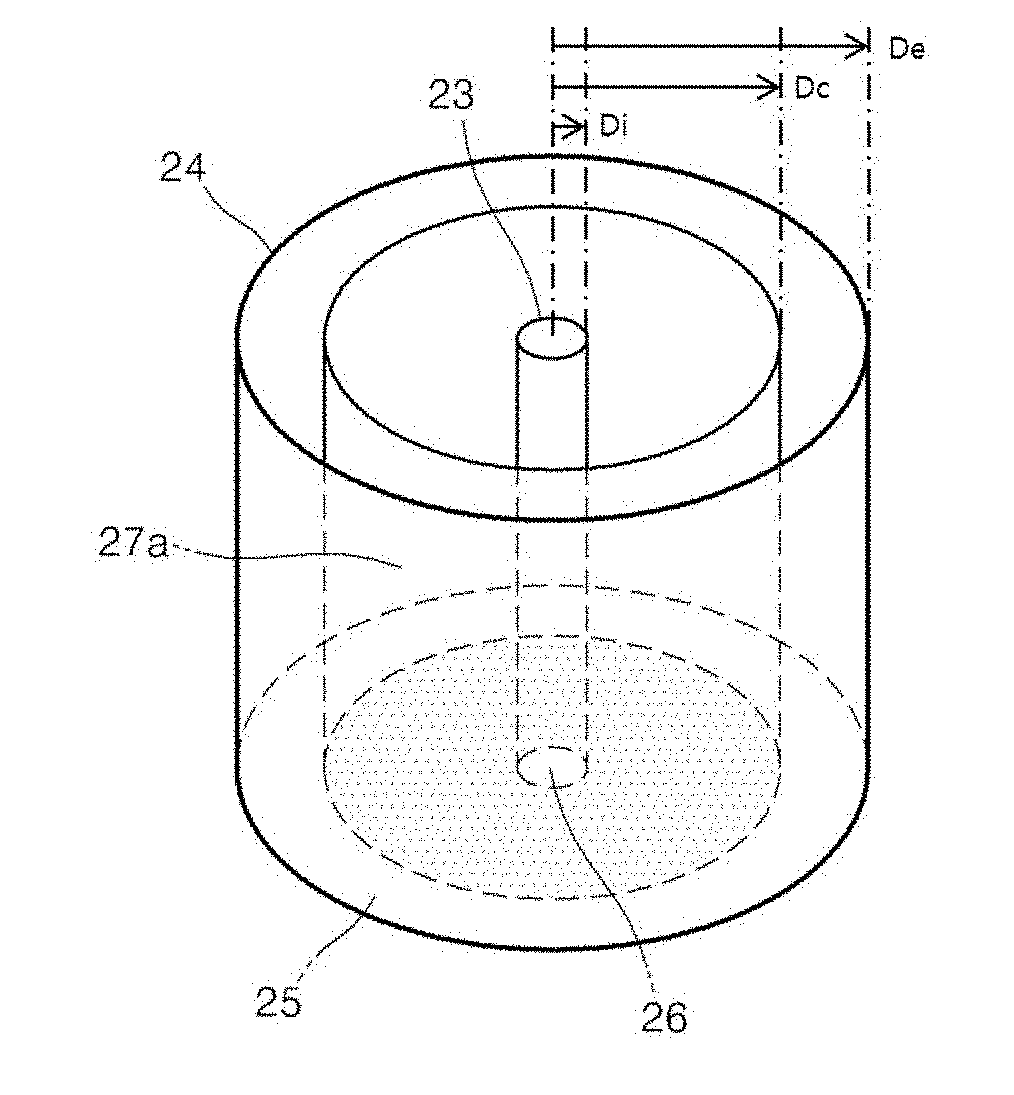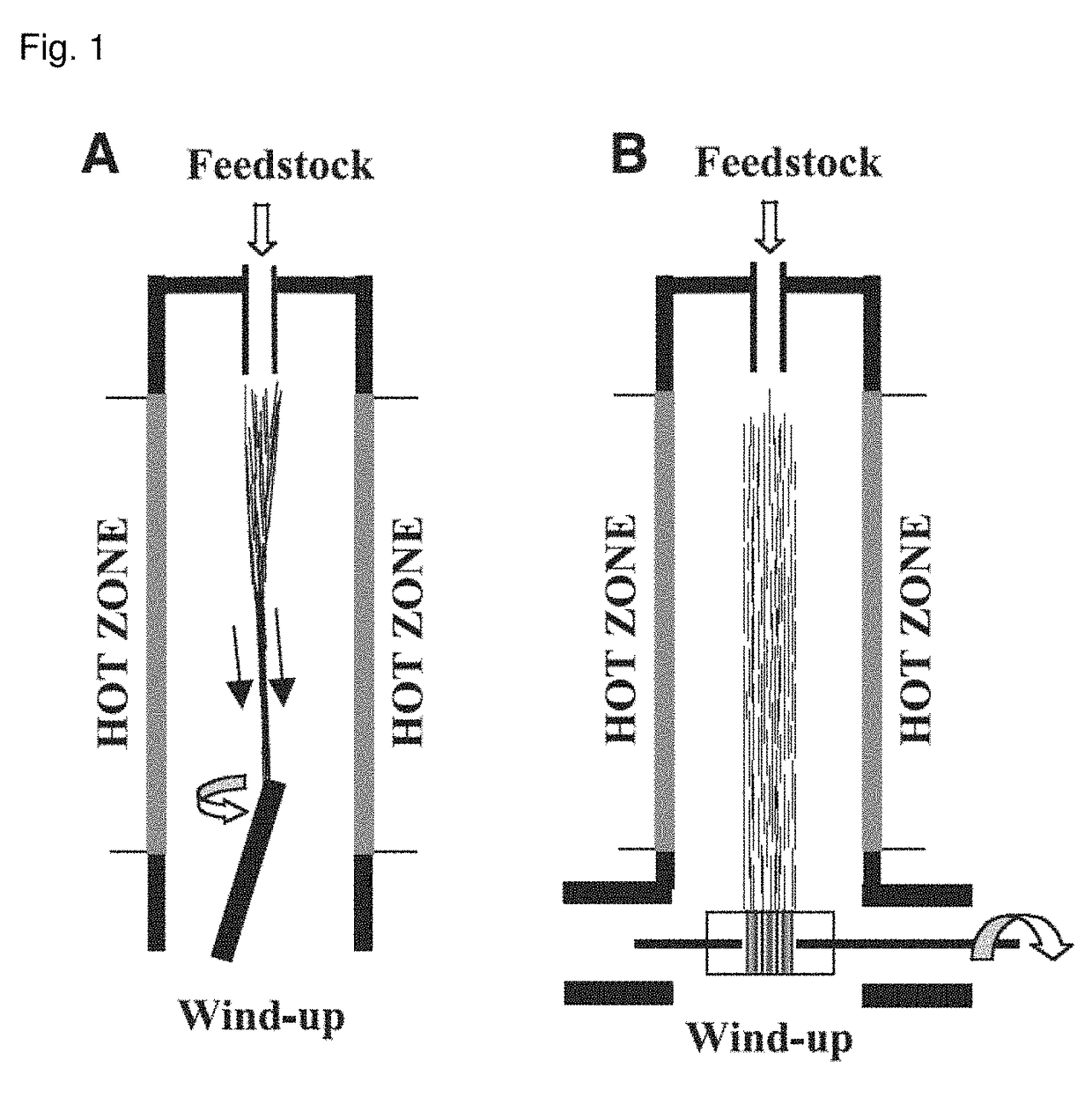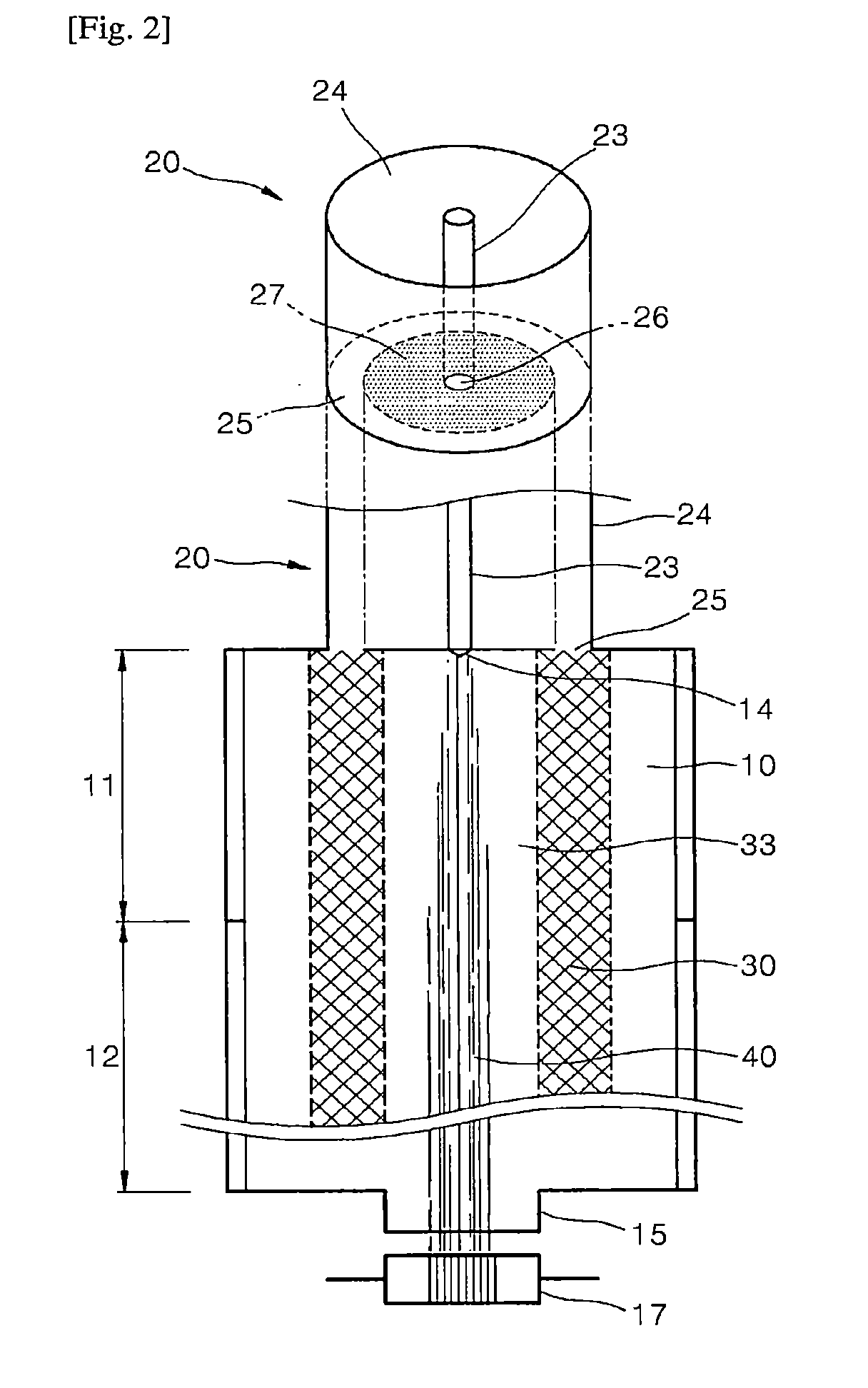Device for producing carbon nanotube fibers and method for producing carbon nanotube fibers using same
a carbon nanotube fiber and carbon nanotube technology, which is applied in the direction of aligned nanotubes, artificial filament chemical after-treatment, chemistry apparatus and processes, etc., can solve the problems of insufficient carbon nanotube characteristics, low spinning speed, and difficult dispersion of carbon nanotubes at a high concentration, so as to facilitate the discharge of carbon nanotube fiber and facilitate continuous long-term operation of the apparatus , the effect of reducing the contamination of the inner wall of the reactor
- Summary
- Abstract
- Description
- Claims
- Application Information
AI Technical Summary
Benefits of technology
Problems solved by technology
Method used
Image
Examples
Embodiment Construction
[0040]The present invention will now be described in more detail with reference to embodiments illustrated in the accompanying drawings. However, this is not intended to limit the present invention to particular modes of practice, and it is to be appreciated that all changes, equivalents, and substitutes that do not depart from the spirit and scope of the present invention are encompassed in the present invention.
[0041]Like reference numerals refer to the like elements throughout the drawings.
[0042]It will be understood that when an element is referred to as being “connected” or “coupled” to another element, it can be directly connected or coupled to the another element or intervening elements may be present.
[0043]As used herein, an expression used in the singular encompasses the expression of the plural, unless the context clearly indicates otherwise.
[0044]The terms “comprises”, “comprising”, “includes”, “including”, “has”, “having”, etc. are intended to indicate the existence of f...
PUM
| Property | Measurement | Unit |
|---|---|---|
| temperature | aaaaa | aaaaa |
| diameter | aaaaa | aaaaa |
| diameter | aaaaa | aaaaa |
Abstract
Description
Claims
Application Information
 Login to View More
Login to View More - R&D
- Intellectual Property
- Life Sciences
- Materials
- Tech Scout
- Unparalleled Data Quality
- Higher Quality Content
- 60% Fewer Hallucinations
Browse by: Latest US Patents, China's latest patents, Technical Efficacy Thesaurus, Application Domain, Technology Topic, Popular Technical Reports.
© 2025 PatSnap. All rights reserved.Legal|Privacy policy|Modern Slavery Act Transparency Statement|Sitemap|About US| Contact US: help@patsnap.com



